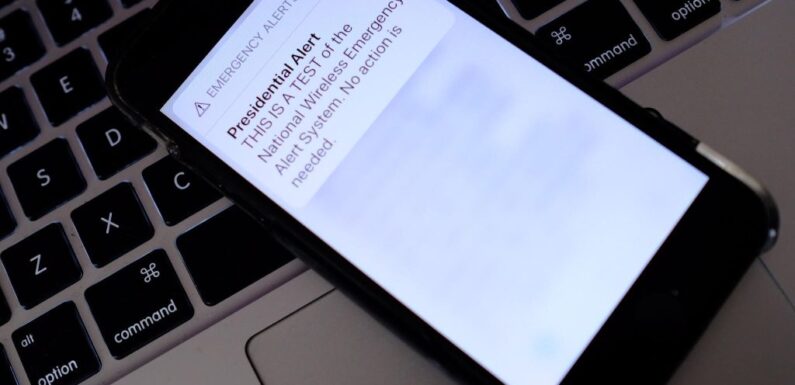
While Americans are getting increasingly used to emergency alerts from local police and fire officials, on October 4 at 2:20 p.m. ET they’ll receive something a little different.
“THIS IS A TEST of the National Wireless Emergency Alert System. No action is needed,” the alert should read. It will be sent to all consumer cell phones in either English or in Spanish, depending on the language settings of the wireless handset.
Related Stories
FCC Proposes ‘All-In’ Pricing Requirements For Cable And Satellite Providers
WGA Awards TV Nominations: ‘The Handmaid’s Tale’, ‘Barry’, ‘SNL’ Make List
Simultaneously, an emergency alert will also be sent out to radios and televisions. It will be much like those viewers receive monthly as part of the Emergency Alert System and accompanied by that prolonged “unique tone,” as FEMA terms it.
This is only the second time a national alert test has been sent to all cellular devices and the seventh time such a message has been sent to radios and TVs. While most emergency communications are regional – Angelenos got one earlier this year about an earthquake – these tests anticipate a truly national emergency.
Here is sample text provided by the agency:
“This is a nationwide test of the Emergency Alert System, issued by the Federal Emergency Management Agency, covering the United States from 14:20 to 14:50 hours ET. This is only a test. No action is required by the public.”
Wireless phones should receive the message only once if they are switched on, within range of an active cell tower and if the applicable wireless provider participates in Wireless Emergency Alert System. Cell towers will broadcast the test for approximately 30 minutes, according to FEMA.
The test to TVs and radios “is scheduled to last approximately one minute and will be conducted with the participation of radio and television broadcasters, cable systems, satellite radio and television providers and wireline video providers.”
In a release, the agencies promised to do their best to minimize panic and confusion due to the alert.
“FEMA and the FCC are coordinating with EAS participants, wireless providers, emergency managers and other stakeholders in preparation for this national test to minimize confusion and to maximize the public safety value of the test.”
There have been recent issues with such alerts on the regional level.
In January 2018, an emergency management systems worker mistakenly sent a “missile alert” warning of an incoming ballistic missile. There was no such threat.
More recently, local officials on Maui came in for criticism for not sending out an alert when Lahaina faced fires in August. The blaze that ripped through the town claimed an estimated 97 lives.
Should the Oct. 4 test be preempted by other significant events, the back-up date is Oct. 11.
Wireless Emergency Alerts are created and sent by authorized federal, state, local, tribal and territorial government agencies to residents in geo-targeted areas. In this case, that means the entire U.S.
Must Read Stories
CEO Bill Block Exits Miramax In Shocker; Company’s Future Direction Questioned
Actors Including Jon Cryer Are “Cautiously Optimistic” As Talks Restart
Union Sends Out Ratification Ballots To OK New Contract; Read Email To Members
With Taylor Swift At Game, Chiefs-Jets Is Most-Watched Sunday NFL Tilt Since Super Bowl
Read More About:
Source: Read Full Article





